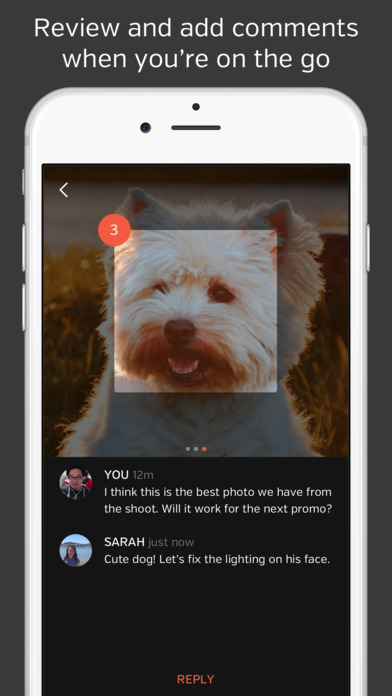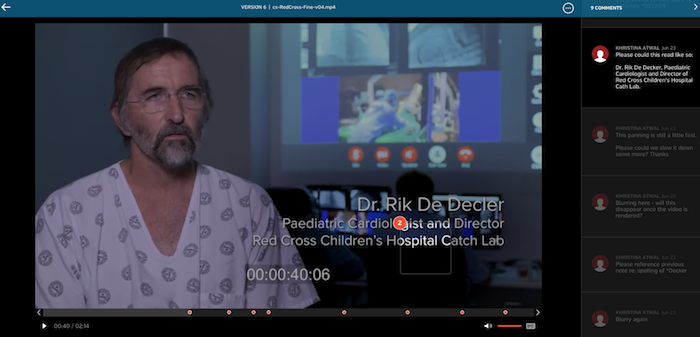The Hidden Cost of Broken Creative Process from Hightail on Vimeo.
Have you ever stopped to think about how that 7th round of creative review is costing you? And I’m not just talking about your out-of-pocket cost for the agency or freelance creatives you’re working with on your campaign. There’s also the opportunity cost for internal resources and the business, along with the revenue lost because of the delay getting the campaign to market.
As a leader responsible for both our revenue and creative operations, a blended creative rate of $200 per hour is constantly on my mind as we seek pixel perfect work. Even if you account for multiple rounds and revisions in a creative scope of work, the amount of time that you or your team is taking to provide feedback is costing you in terms of missed opportunities and missed revenue. Many marketers face these same issues:
- 60% of marketers say producing content is a top challenge
- 75% of marketers don’t have an effective creative process
- Only 27% of marketers have a process in place to aggregate, organize, and manage visual assets being used across their marketing teams
- 44% of projects delivered are late, over budget or incomplete – what a waste!
In a recent webinar I did with Adweek, this topic struck a chord with over 900 marketers and agencies. You can watch a full recording of that webinar above. We received a lot of questions throughout the session – here’s my response to some of the most interesting ones that you might relate to.

Q: Can you give us some tips on holding clients to deadlines for feedback and explaining to them how it affects the project when they do not adhere to them? Partner / Creative Agency
A: The review process is one of the biggest reasons creative projects run late. It’s no secret that providing actionable feedback is a lot of work and takes time to do well. Clients don’t often allocate enough time in their already busy schedules for providing feedback, so they procrastinate. You need to make it easy for your clients to provide clear, actionable feedback.
One Hightail customer, Polycom, saw these delays on video reviews in particular. The product marketing manager responsible for giving feedback was always late giving feedback to the production team because it was such a hassle for her to document all the timestamps in email. With Hightail, she is able to simply add a comment right on the video as she streams it. This makes it easy for her to provide the feedback on time and easy for the production team to know precisely where edits are required.
Q: On the flip side: How do you convince creative types that meeting deadlines is not only possible, it is a must-do? Partner / Creative Agency
A: This is tough since the creative process is definitely non-linear and it can be counterproductive to try to impose overly structured milestones to it. Because inspiration can come from anywhere, you want to encourage and facilitate team wide collaboration at every part of the process. I think that by being transparent about the business reason and domino effect of late deliverables for both the reviewer and creatives, is one way to draw out empathy from your creative team. Second, by making it easy and conversational for your creative teams to share early thinking and ideas with key approvers, momentum begins earlier and many missteps can can be avoided. And last, having a process that makes feedback easy to understand, given on-time and shows clearly what is approved will allow the creative teams to avoid missed deadlines on their part.
Q: In big brands and organizations that use RACI models, can Hightail bend and flex to accommodate the roles on the client side? Director, Creative Services / Brand
A: This methodology of identifying the stakeholders, their role and power of approval is something that even small teams can benefit from. It can be a delicate conversation – but it’s best to get that clarity early on. It’s important especially for the agency to have an understanding of this as well. Agencies should be asking for this upfront. A big mistake is if you don’t involve senior leaders early on in the process. It’s so much easier even if it’s just a case of the key approver having ambient awareness of what’s happening.
Q: As a busy Creative Director, I am having issues tracking freelance design hours, keeping designers within an allotted (estimated) number of design hours, adjusting hours scope when needed and remaining fair when they bill for overages. Thoughts? Creative Director / Marketing Agency
A: You could benefit from a solution that allows you to easily stay on top of project progress – even when you’re not involved in the day-to-day. Hightail’s dashboard has an activity feed which allows you to stay up-to-date with having to request progress reports from your team. Has the new version been added? Is the feedback actionable? It’s all there in one place and because you’re able to see the conversations and feedback, you are able to jump in and course correct as needed so there is less wasted work. With team activity views, you can also see who is the most active, staying on top of the many projects you have in-flight at any time.
Q: Why do you think so many agencies stall on adopting collaboration tools like yours? Managing Director / Creative Network
A: The biggest reason most agencies stall is adoption anxiety. They fear it’s “not the right time” to introduce a new tool internally and they fear the client won’t like it. If your team and your client don’t adopt it, you won’t see the benefit. Hightail was built for quick, intuitive adoption by every part of your collaboration team. Its conversational style means it’s comfortable for everyone on the team to just jump right in.
Q: Do you find it easier for agencies to customize your platform to their process, or for agencies to adapt their process to your platform? Account Manager / Ad Agency
A: Every creative process is a little bit different, and we built Hightail with that in mind. For example, one customer wanted Hightail purely to create mood boards because it is such a visual way of collecting digital content in one place. A social media agency uses it to get approval of the week’s tweets and FB posts from their clients (using the comments on an image to show them what copy they’re suggesting).
While their processes and use cases may be different, what everyone needs out of their creative review and approval processes is the same. Your reviewers need to easily preview and provide actionable feedback. Your creative needs to react and respond to that feedback with new versions. Hightail was purpose-built to streamline creative review and approval and to be easily and quickly adopted by internal teams, freelancers and clients.
 Q: How do you implement changes that are needed across multiple creative teams not under one roof? Marketing Manager / Brand
Q: How do you implement changes that are needed across multiple creative teams not under one roof? Marketing Manager / Brand
A: You want a solution that allows team members in disparate locations to work as easily together as if they were side by side. Because Hightail supports multiple visual formats like images, pdfs, videos and more, it’s better than single-format options because each creative teams are made of different types of creators and a design-specific tool wouldn’t work for the video producer. If your team is using separate tools, you’re introducing a division instead of bringing them together. And mobile solutions – both app and mobile browser are key so that everyone on the team, including clients and other approvers, can engage on the go.
Q: If you don’t have all the info you need upfront, do you begin a project or pushback? How does that work if there are time constraints? Graphic Designer / Brand
A: This is a huge dilemma that agencies are often put in – usually by someone like myself – who puts them in this position by throwing out half-baked ideas. It’s important for agencies in this case to not be a “Yes man” and push back to request more definition around the project. A critical part of this is the creative brief to make sure everyone is on the same page. We’ve shared our top 6 tips for writing a creative brief if you need help nailing it.
Overall, we’ve found that enabling your team and stakeholders with the right tool to streamline review and approval avoids costly miscommunications, missteps and delays.
Have you considered the costs of your current creative process? If so, let us know what questions you have.






